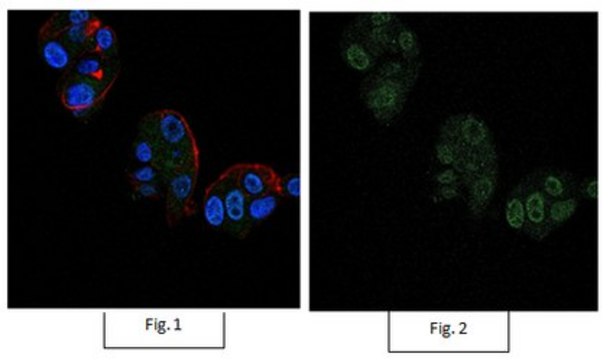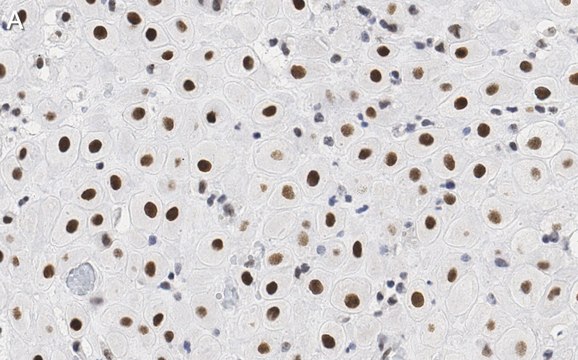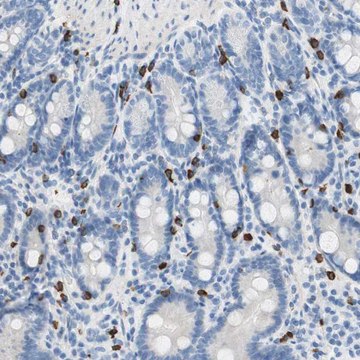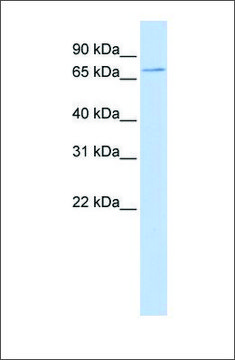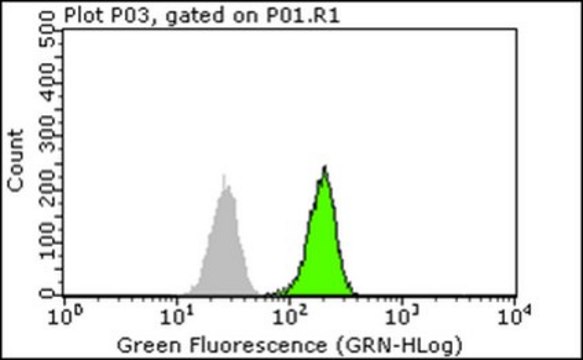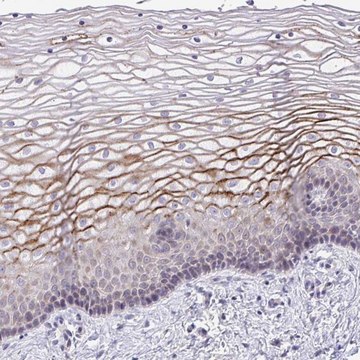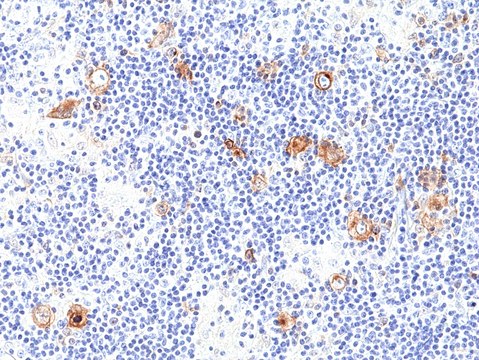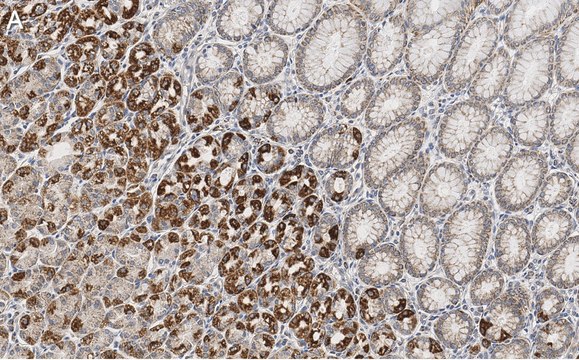SAB4200034
Anti-BMI1 (C-terminal) antibody produced in rabbit
~1.0 mg/mL, affinity isolated antibody, buffered aqueous glycerol solution
别名:
Anti-B lymphoma Mo-MLV insertion region 1 homolog, Anti-PCGF4, Anti-Polycomb group RING finger protein 4, Anti-RNF51, Anti-Ring finger protein 51
About This Item
推荐产品
生物来源
rabbit
偶联物
unconjugated
抗体形式
affinity isolated antibody
抗体产品类型
primary antibodies
克隆
polyclonal
表单
buffered aqueous glycerol solution
分子量
antigen ~37 kDa
种属反应性
human
包装
antibody small pack of 25 μL
浓度
~1.0 mg/mL
技术
immunoprecipitation (IP): 2.5-5 μg using lysates of HEK-293T cells over expressing human BMI1
indirect immunofluorescence: 1-2 μg/mL using paraformaldehyde fixed HEK-293T cells over expressing human BMI1
western blot: 2-4 μg/mL using lysates of HEK-293T cells over expressing human BMI1
UniProt登记号
运输
dry ice
储存温度
−20°C
靶向翻译后修饰
unmodified
基因信息
human ... BMI1(648)
一般描述
应用
- western blotting
- immunoprecipitation
- immunofluorescence
生化/生理作用
外形
免责声明
未找到合适的产品?
试试我们的产品选型工具.
储存分类代码
10 - Combustible liquids
闪点(°F)
Not applicable
闪点(°C)
Not applicable
法规信息
我们的科学家团队拥有各种研究领域经验,包括生命科学、材料科学、化学合成、色谱、分析及许多其他领域.
联系技术服务部门
